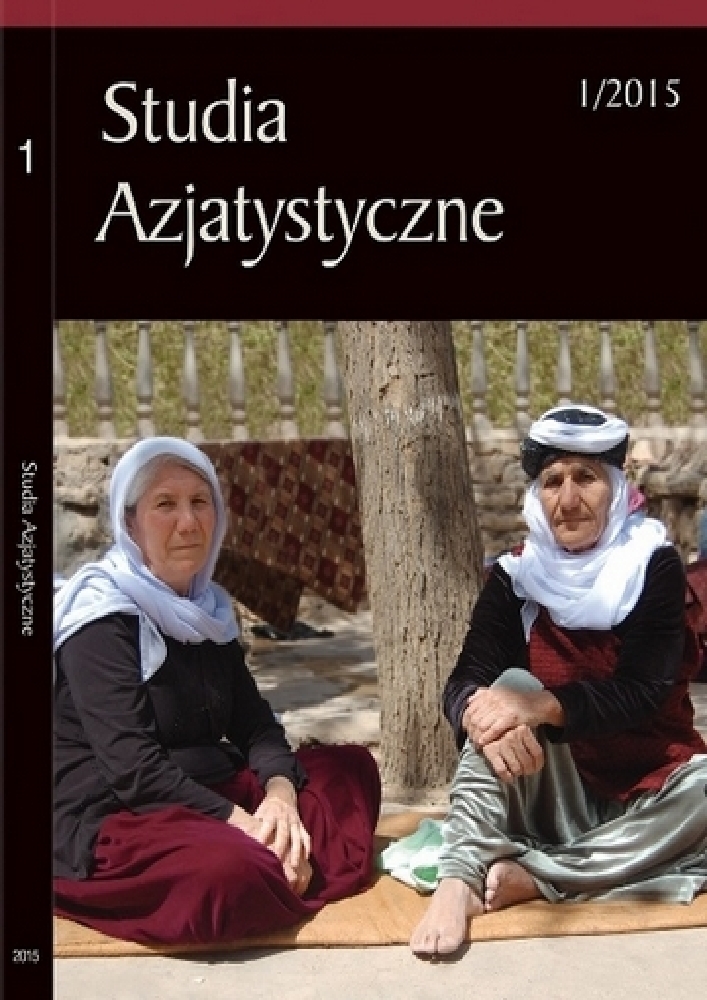Abstract
The early relations between Japan and Europe have been established in the period of civil war and turmoil. One of the most interesting events of that time was an envoy organized by Date Masamune and headed by Hasekura Tsunenaga which set to Mexico (1613) and later on Europe (1615). Although the political and economic goals have not been achieved, on the level of cultural relations this visit was a real breakthrough. The various artworks created and exchanged between the Old Continent and Asia have served as important means of visual propaganda. Thanks to them Hasekura has become a “face” of Japan in Europe, spreading new customs and fashions. His baptism can be also understood as a sing of political ambitions, empowering the Catholic missionaries in Eastern Asia. Though in the following decades Hasekura and his mission have been covered up by the isolationist policy of the shogunate, his achievements have been rediscovered and are nowadays commemorated in a number of ways worldwide.References
Adachi, Nobuko. 2010. Japanese and Nikkei at Home and Abroad: Negotiating Identities in a Global World. New York: Cambria Press.
Corradini, Piero. 2003. Some Problems Concerning Hasekura Tsunenaga’s Embassy to the Pope: Adriana Boscaro, Franco Gatti, Massimo Raveri (red.).Rethinking Japan: Social Sciences, Ideology & Thought. London: Routledge.
Fujiwara, Mayu. 2012. The Borghese Papacy Reception of a Samurai Delegation and Its Fresco-Image at the Palazzo del Quirinale, Rome: Ch. H. Lee (red.). Western Visions of the Far East in the Transpacific Age 1522-1671. Farnham: Ashgate Publishing, s. 181-202.
Huffman, James L. 2010. Japan in World History. New York: Oxford University Press.
Jansen, Marius B. 2002. The Making of Modern Japan. Cambridge: Harvard University Press.
Massarella, Derek. 2012. Japanese Travellers in Sixteenth-Century Europe: A Dialogue Concerning the Mission of the Japanese Ambassadors to the Roman Curia (1590). Farnham: Ashgate Publishing.
Masterson, Daniel M., Sayaka Funada-Classen. 2004. The Japanese in Latin America. Urbana: University of Illinois Press.
Michałowski, Piotr. 2005. Galeria Atanazego Raczyńskiego. Poznań: Wyd. Muzeum Narodowego w Poznaniu.
Moreno, Paolo, Chiara Stefani. 2000. The Borghese Gallery. Milan: Touring Editore.
Nye, Joseph S. Jr. 2007. Soft Power. Jak osiągnąć sukces w polityce światowej. Warszawa: Wydawnictwa Akademickie i Profesjonalne.
Pałyga, Edward Józef. 1983. Kultura jako istotny komponent polityki zagranicznej: J. Liszka, J. Przewłocki (red.). Kultura jako nośnik treści ideologicznych w stosunkach międzynarodowych. Katowice: Uniwersytet Śląski, s. 9-21.
Slade, Toby. 2009. Japanese Fashion: a Cultural History. Oxford: Berg.
Tubielewicz, Jolanta. 1984. Historia Japonii. Wrocław: Ossolineum.
Wosińska, Adrianna (red.). 2011. Japoński Soft Power: wpływ Japonii na kulturę zachodnią. Toruń: Kirin.
Źródła internetowe
Awamura, Ryoichi. 2003. Spain’s Japon Clan Has Reunion to Trace its 17th Century Roots, The Japan Times, http://www.japantimes.co.jp/news/2003/12/11/national/spainsjapon-clan-has-reunion-to-trace-its-17th-centuryroots/#.UybUEoWOPo5, dostęp 8.04.2015.
Cooper, Michael. 1982. Spiritual Saga: The Japanese Mission to Europe,1582-1590, http://pweb.cc.sophia.ac.jp/britto/xavier/cooper/cooper02.pdf
http://www.tedtoy.com/delprado_samurai.htm, dostęp 8.04.2015.
License

Ten utwór jest dostępny na licencji Creative Commons Uznanie autorstwa 4.0 Międzynarodowe.
